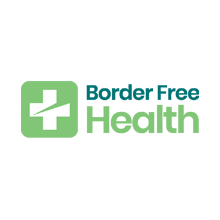Pulmonary embolism (PE) is a serious condition that occurs when a blood clot travels to the lungs, blocking blood flow. While PE can happen to anyone, travelers, particularly those undertaking long-haul flights, face unique risks. With the growing popularity of air travel, understanding these risks and taking preventive measures is crucial for maintaining good health during journeys.
Understanding Pulmonary Embolism
PE typically stems from deep vein thrombosis (DVT), where blood clots form in deep veins, usually in the legs. These clots can break loose and travel through the bloodstream, eventually lodging in the lungs. Common symptoms of PE include shortness of breath, chest pain, and coughing up blood. Prompt medical attention is essential, as untreated PE can be life-threatening.
Risks Associated with Travel
Long periods of immobility, such as those experienced during long-haul flights, increase the risk of DVT and, subsequently, PE. Other factors contributing to PE during travel include:
- Restricted Movement – Sitting for extended periods in cramped conditions restricts blood flow, promoting clot formation.
- Dehydration – Airplane cabins have low humidity levels, leading to dehydration, which thickens the blood and makes clotting more likely.
- Pressure Changes – Fluctuations in cabin pressure can affect blood circulation, exacerbating clot formation.
- Existing Health Conditions – Individuals with pre-existing conditions like obesity, cardiovascular diseases, or a history of DVT are at higher risk.
Pulmonary Embolism Diagnosis Gold Standard
In suspected cases of pulmonary embolism (PE), the gold standard for diagnosis is computed tomography pulmonary angiography (CTPA). This imaging technique provides detailed visualization of the pulmonary arteries, allowing healthcare professionals to identify blood clots with precision. CTPA is highly sensitive and specific, making it the preferred diagnostic tool for confirming PE.
Additionally, other diagnostic tests may be utilized, including ventilation-perfusion (V/Q) scans, which assess airflow and blood flow in the lungs, and D-dimer blood tests, which measure the presence of a protein fragment indicative of blood clotting. However, CTPA remains the most reliable method for diagnosing PE, enabling prompt initiation of appropriate treatment and minimizing the risk of complications.
Preventive Measures for Pulmonary Embolism
Preventive measures to reduce the risk of pulmonary embolism during travel include:
- Stay Hydrated – Drink plenty of water before, during, and after the flight to prevent dehydration.
- Move Regularly – Perform simple exercises like ankle circles, calf raises, and walking up and down the aisle to promote blood circulation.
- Compression Stockings – Wear compression socks or stockings to improve blood flow in the legs and reduce the risk of DVT.
- Choose Aisle Seats – Opt for aisle seats to facilitate movement and stretching during the flight.
- Avoid Alcohol and Caffeine – Limit consumption of alcohol and caffeine as they contribute to dehydration.
- Consider Medication – For individuals at higher risk, consult a healthcare professional about the possibility of using blood thinners or other medications before travel.
Takeaways
Pulmonary embolism is a serious health concern, especially for travelers undertaking long-haul flights. Understanding the risks and implementing preventive measures is essential for safeguarding against this condition.
By staying hydrated, moving regularly, wearing compression stockings, and making other lifestyle adjustments, travelers can significantly reduce their risk of developing PE during flights. Prioritizing health and taking proactive steps ensure safe and enjoyable travels for all. Remember, when it comes to PE, prevention is key.
Frequently Asked Questions (FAQs)
How is the risk of pulmonary embolism (PE) assessed?
PE risk assessment involves evaluating various factors such as medical history, current health status, lifestyle, and predisposing conditions. Healthcare professionals use tools like the Wells score or Geneva score to assess the likelihood of PE. These scoring systems consider factors such as signs and symptoms, the presence of risk factors (e.g., recent surgery, immobilization), and alternative diagnoses. Additionally, imaging tests such as computed tomography pulmonary angiography (CTPA) may be performed to confirm the diagnosis and assess the severity of PE.
What is involved in the follow-up care after experiencing a pulmonary embolism?
Aftercare for pulmonary embolism typically involves regular medical monitoring to assess treatment efficacy, prevent recurrence, and manage complications. This may include periodic check-ups with healthcare providers, imaging tests to evaluate clot resolution and adjustments to medication regimens as needed. Patients may also receive counseling on lifestyle modifications, such as maintaining a healthy weight, staying physically active, and avoiding prolonged periods of immobility. Close communication between patients and healthcare providers is essential for ensuring optimal recovery and reducing the risk of future PE events.

